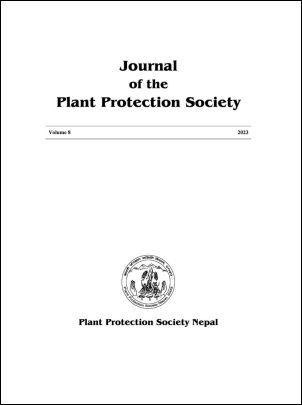Efficacy of Different Weed Management Practices on Growth and Yield of Spring Rice under System of Rice Intensification (SRI) in Bara, Nepal
DOI:
https://doi.org/10.3126/jpps.v8i1.56454Keywords:
Cono-weeding, herbicide, pretilachlor, spring riceAbstract
A field experiment was conducted during the spring season of 2022 to determine the effects of various weed management practices on production and productivity of transplanted spring rice under System of Rice Intensification (SRI) at Kolhabi, Bara, Nepal. The experiment was laid out in a single-factorial Randomized Complete Block Design (RCBD) with five treatments and four replications. The treatments consisted of pretilachlor 50% EC (dose: 500 g a.i. per ha) as preemergence herbicide, pretilachlor 50% EC (dose: 500 g a.i. per ha) plus hand-weeding at 20 and 40 DAT, hand weeding at 20 DAT, 40 DAT & 60 DAT, conoweeding at 20, 40 & 60 DAT and weedfree or control. The plot treated with conoweeding recorded a significantly higher plant height (108.90cm), higher number of tillers/m2 (486.19), and higher number of grains per panicle (211.19) at 90 DAT. The sterility percentage and the number of grains per panicle were not affected by the weed management practices. Conoweeding was found statistically superior in terms of grain yield (7.12 mt/ha) and straw yield (9.77 mt/ha). The experiment concluded that the weed management practices affect the grain yield of transplanted spring rice. Though herbicide is considered as the economical and effective source of weed management practices, higher yield was obtained in the cono-weeded plots.
Downloads
Downloads
Published
How to Cite
Issue
Section
License

This work is licensed under a Creative Commons Attribution-NonCommercial 4.0 International License.
This license enables reusers to distribute, remix, adapt, and build upon the material in any medium or format for noncommercial purposes only, and only so long as attribution is given to the creator.

